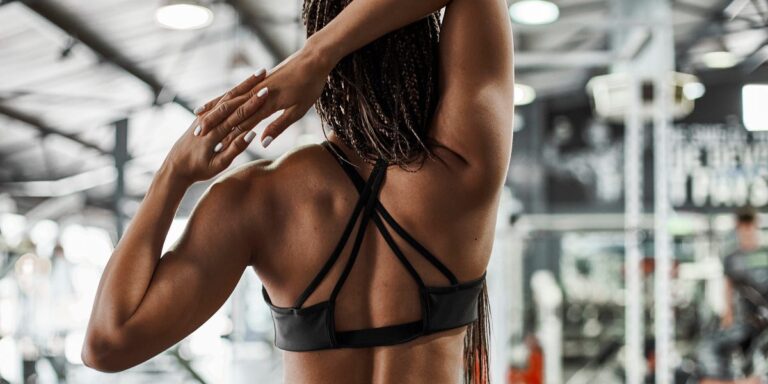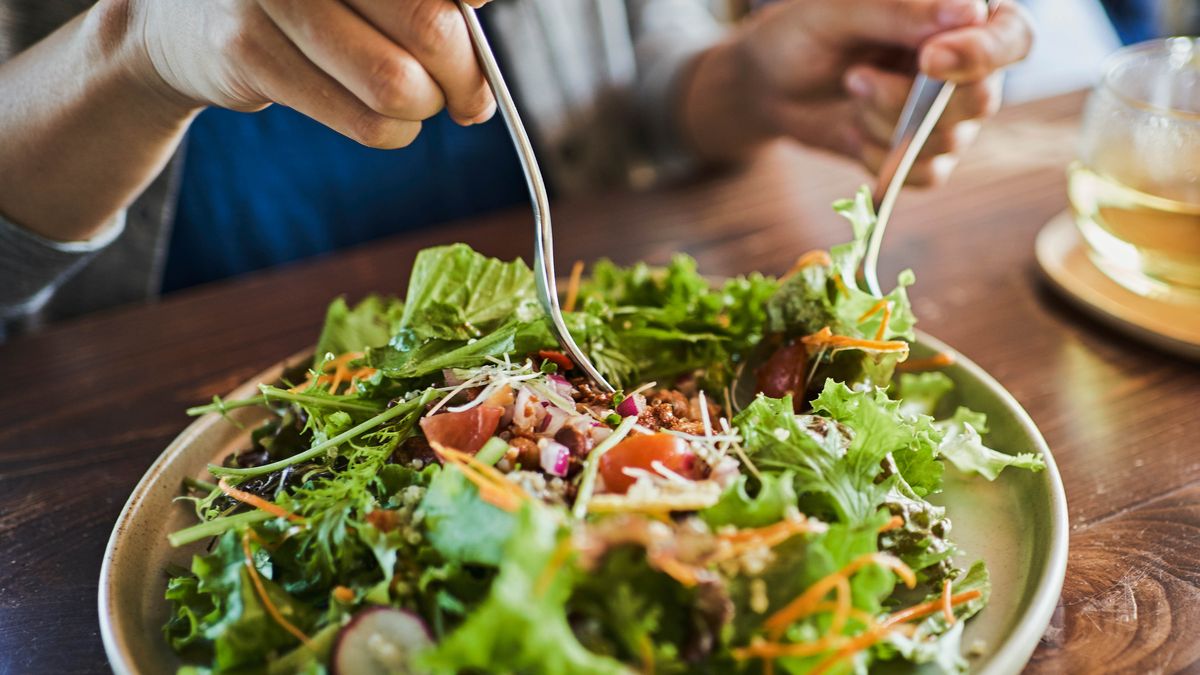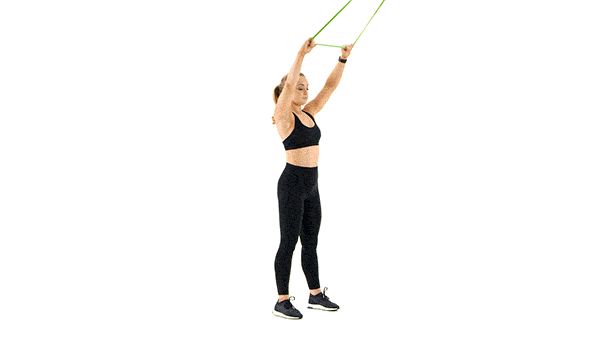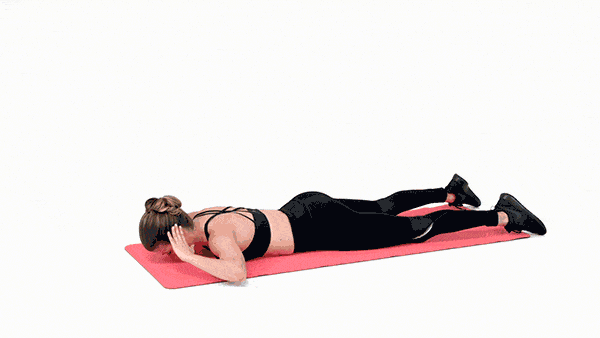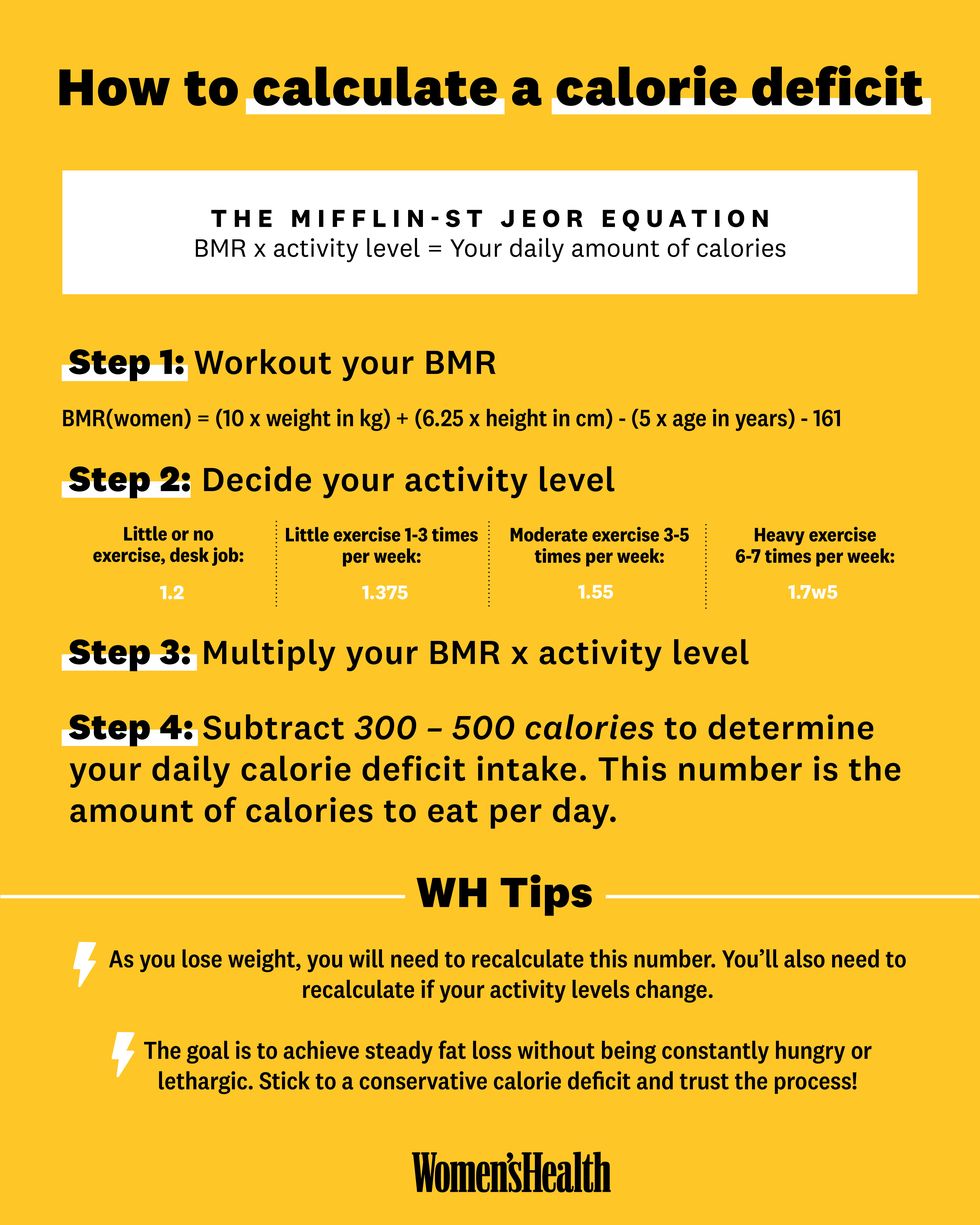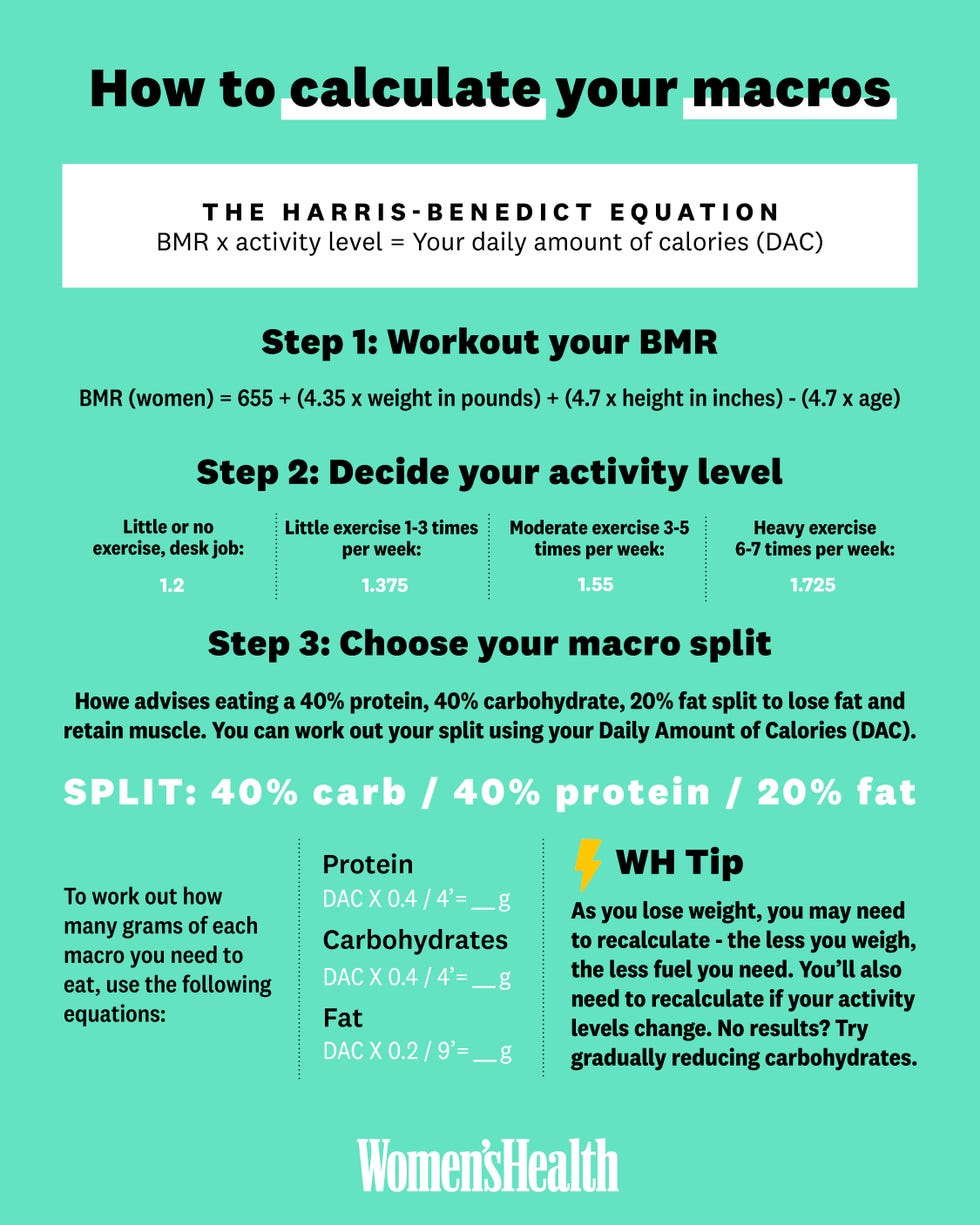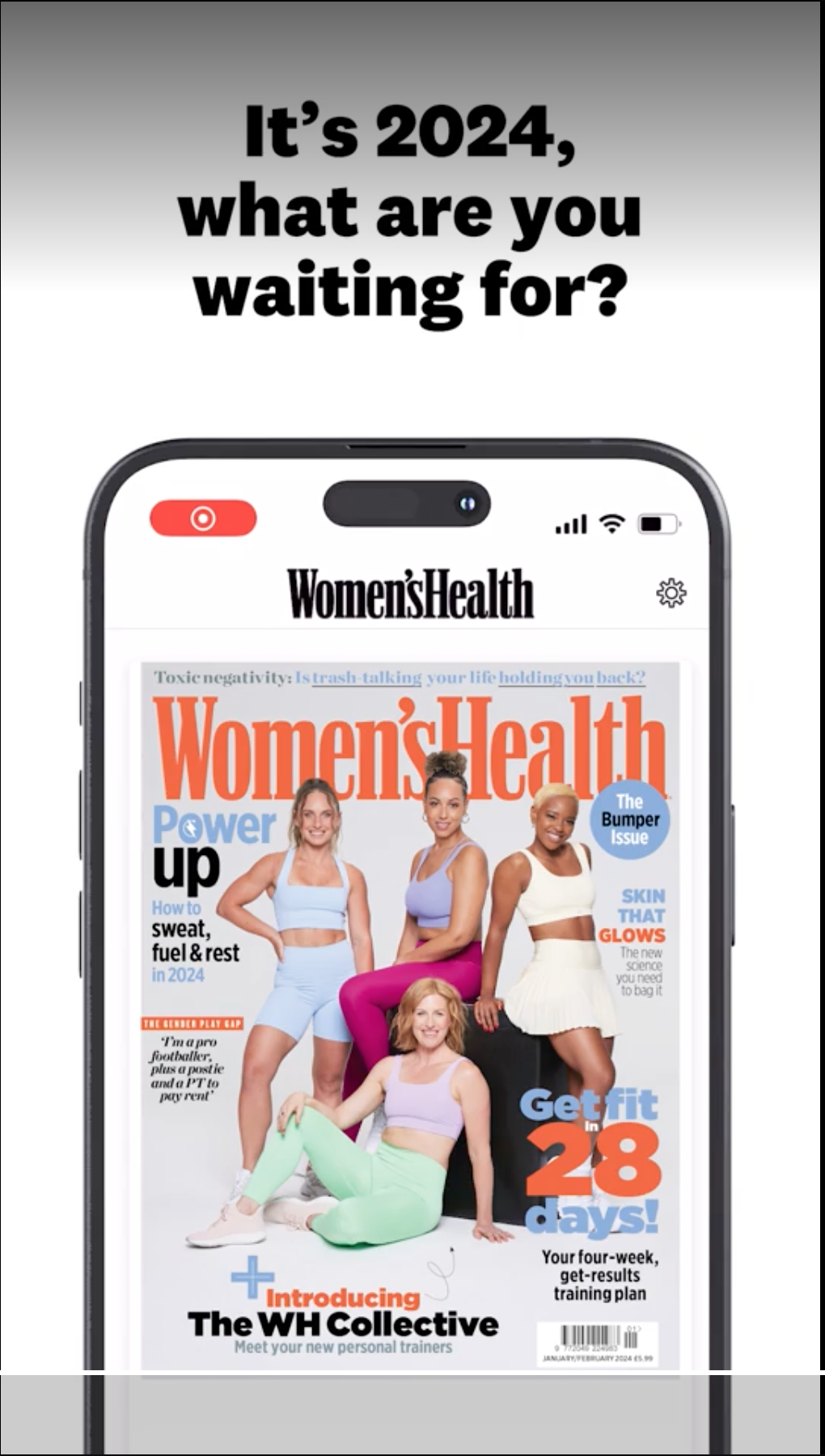[ad_1]
Since 2.4k people search for ‘how to get rid of back fat’ every month, it’s clearly an area many of you want to address. But having back fat is totally normal and body fat is essential for things like storing energy and regulating body temperature.
It’s also important to remember – as the University of Sydney reminds us – that you can’t spot reduce fat or control where on your body it comes off, first, last or at all…
If you’ve only tried to get rid of back fat the same way you’ve gone about losing body fat – with crash dieting or short-term exercise routines – that’s not the most advisable approach.
The best way to achieve a manageable body composition and lose fat sustainably is by adopting healthy habits that make your life better, not smaller. This means not dabbling in extreme dieting, eating excessively restrictively, cutting out food groups or pushing through another set of reps you don’t enjoy.
What causes back fat?
‘Back fat accumulates slowly over time,’ says elite PT and former professional athlete Henry Barratt. ‘Each 10 year period, starting from 30 years of age, it becomes more noticeable how hard it is to shift, especially around the “love handles“, “muffin tops” and behind the bra strap,’ Barratt explains. This is due to something called somatopause, the phenomenon of declining growth hormone levels as women age. Lower amounts of growth hormone make it harder to build new muscle and maintain what we have already. In other words, what were once back muscles, could naturally turn into back fat and upper body fat.
Besides that, lifestyle causes can include:
- Eating excess sugar or salt (which can contribute to inflammation in the body)
- Eating too many calories (understand how many calories your body requires before even beginning to tot up food maths. A widely used approach is counting macros)
- A sedentary lifestyle
- Natural ageing process
- Poor posture, which can make softer areas more obvious to you
Moreover, not using your back muscles can contribute to a loss of strength and tone as, unlike those on the front of the body, the muscles that run along your back – e.g. the glutes, hamstrings and back muscles – can go neglected unless you consciously strengthen them.
Sometimes the issue isn’t fat distribution but posture, which emphasises any lack of tone by allowing softer skin to wrinkle and bulge.
Back fat could also be associated with insulin resistance, high testosterone and low carbohydrate tolerance, as well as increased risk of diabetes, PCOS and infertility, so if you’ve been battling with it for as long as you can remember, it might be an idea to see a GP.
The fact of the matter is that you can’t spot reduce body fat. No way, no how. Neither diet nor exercise will equate to spot losing back fat – and that goes double for those suspect internet sources that claim their “back fat exercises” get results in seven days.
Rather, to strengthen softer parts and reduce your overall body fat is a process. It’s not working to achieve long-lasting results because ultimately, that’s a good sign that you’re in a healthy routine.
We’re going to walk you through how to do it safely and sustainably.
Is back fat unhealthy and how much body fat is normal for women?
In general, back fat isn’t unhealthy, no. More often than not, it’s a sign of totally natural changes in the body, such as:
- Somatopause (as mentioned above: when growth hormone levels decline as women age and it becomes harder to maintain muscle)
- Ageing
- A change in posture as you age
Luke Worthington, a PT and performance specialist, adds that another case of back fat being totally normal is when it comes down to genetics. ‘We all have a predisposition to store body fat in particular areas,’ he explained. ‘There’s no specific reason or cause for storing body fat in one area over another.’
All that said, back fat could, as we’ve said, be associated with insulin resistance, high testosterone and low carbohydrate tolerance, increased risk of diabetes, PCOS and infertility. It’s vital you see a GP if lifestyle changes aren’t making any difference to the amount of back fat you have.
How much body fat is normal? It’s impossible (and pretty useless) to advise on how much fat you should have on your back in particular, but it could be helpful to take stock of your body fat in total. The Royal College of Nursing advises that a healthy body fat percentage for women aged 20 to 40 is between 15% and 31%. As you get past 40, your ideal body fat percentage might get higher.
‘While healthy levels are usually between 15 and 31% for women, this is really individual,’ explains Dr Rebecca Robinson, a consultant in sports and exercise medicine.
Remember: women need a certain amount of body fat for proper hormone function – fact. It is also normal and necessary for women to carry slightly more body fat than men.
You can find more information on how to measure your body fat using our complete body fat guide.
What exercises get rid of back fat? 8 best “back fat exercises”
Before we dive in, we’ll remind you what we’ve already said about spot reducing fat in a certain area—not a great strategy. However, if you want to target the muscles in your back, we’ve got you covered.
‘Pull-ups are fantastic for shaping the back as are reverse flies with dumbbells and cables,’ advises Barratt. We’ve rounded up six of the best back exercises to sculpt a strong upper back below. (Hint, if you’re Googling “back fat exercises”, these will help with muscle build and ‘toning’ goals.)
These resistance training exercises work to strengthen your posterior muscles, which will not only change their appearance but also help to lower the risk of injury.
1. Reverse fly
- Stand with your feet shoulder-width apart, holding dumbbells at your sides.
- Push your pelvis back and bring your chest forward, hinging at the hips until your chest is parallel to the floor.
- Allow the weights to hang towards the floor, with a slight bend in your arms and palms facing each other.Make sure your core is strong, your back is straight, your chin is tucked and your knees are slightly bent.
- Exhale and raise your arms out to the sides while squeezing your shoulder blades together and ensuring you’re not hunching them up towards the ears.Inhale and lower the arms back to starting position.
2. Resistance band pull-down
- Hold the middle of the band with both hands and arms stretched out at a 45 degree angle from your shoulders.
- Bend your elbows and separate your hands as you pull the band towards your chest.
- Return the band to the starting position with control.
3. Dumbbell bent over rows
- Make sure you’ve got the right amount of weight as too much will make you more likely to have improper form, meaning you’ll get less out of the exercise than doing it in a controlled manner.
- You can perform bent-over rows with both feet planted on the ground hip-width apart, as in the video above.
- Then draw the dumbbell towards your waist, keeping your elbow tucked into your side.
- To complete the rep, extend your arm back to the starting position. Aim to complete three sets of 10 to 12 reps on each side.
- If you’re battling with balance, or rounding or arching your back, using a bench might help. Simply pop your left hand (or whichever one is not holding the weight, obvs) and left knee on a bench, as shown below.
4. Back extension
- Lie on your front and bring your hands to your temples, with your elbows out to the sides.
- Engaging your glutes and core, lift your shoulders and chest off the floor, squeezing your shoulder blades together. (And lifting your legs for a more intense workout.) Aim to lift your head at the same time as leaning forward, as opposed to aiming upwards and overstretching your back.
- Lower back down slowly to the starting position.
5. Dumbbell swing
- Stand with your feet shoulder-width apart and hold the dumbbell with one hand in front of the other.
- Keeping your back straight, bend your knees slightly, push your hips back and swing the weight in between your legs.
- Once the weight is behind the body, contract your glutes and thrust your hips forward, swinging the weight up to chest level.When the weight is at its highest point, contract your glutes, quads and core.
- Allow the weight to swing back between your legs.
6. Side plank variations
- Begin lying on your side with your elbow under your shoulder, and feet and knees stacked (try crossing them over so that both make contact with the floor for more balance).
- Lift your hips up into a side plank, stretching your free arm straight up towards the ceiling.
- Then bring the free arm down and thread it through the space underneath the body while you rotate the shoulder and hips to the floor.
7. Cat cow
- On all fours, have your wrists under your shoulders and your knees under your hips.
- Drop your stomach and lift your chin and tailbone up
- Now arch in the opposite direction, moving your stomach inward and tucking your tailbone.
8. Pull up
- The pull up is a slightly more advanced move that help to build muscle in your back.
- Find a sturdy horizontal bar at a height where you can hang freely.
- Stand beneath the bar, reach up, and grip it with your palms facing away from your body (overhand grip).
- Hang with your arms fully extended, shoulders pulled down away from your ears.
- Pull your body up by bending your elbows and squeezing your shoulder blades together.
- Continue pulling until your chin clears the bar, keeping your chin tucked in downwards.
- Lower your body back down smoothly with control until your arms are fully extended, maintaining your shoulder tension you started with.
Cardio also can contribute to overall fat loss. Consider including running or cycling in a week’s routine.
Healthy diet tips to get rid of back fat safely
‘Exercise is important to help change body composition, however, the most gains can be made by changing nutritional habits’, says Barratt. The old adage remains true; ‘you can’t out-train a bad diet.’
Mindful eating
A key part of dealing with excess body fat is mindful nutrition, ensuring you’re eating a balanced diet full of vegetables and whole foods. To lose body fat, you need to be in a calorie deficit, something that mindful eating can really help with. The same goes for back fat.
‘It’s not about dieting,’ says Barratt. ‘Just making sure you’re eating the correct number of calories for your height and gender,’ which for most (emphasis on most, not all) women is normally between 1,450 and 2,000.
Not sure how many calories to be eating to be in a calorie deficit? Here’s how to calculate yours. Remember, the majority of your meals should be made up of whole, nutrient-dense foods. There’s always room for fun but moderation really is king here. Plus, as mentioned, calorie counting could be effective if you follow guidance and have a health-driven goal, but otherwise you’ll likely end up sabotaging your goals. It’s also not advised for anyone who has – or previously has had – a difficult relationship with food.
Or, if you’re accustomed to eating in a CICO diet (calories in, calories out) fashion, learning how to count your macros for fat loss can help, too. Not familiar with macros? It’s an abbreviation of ‘macronutrients’ and refers to the three main food groups humans need – protein, fat and carbohydrates. The ratios in which you eat these macronutrients can help you to build muscle or lose body fat, back fat inclusive.
We’ve broken down how to calculate yours at the handy infographic below:
Focus on energy and nutrient-dense foods
‘Fuelling yourself with energy-dense foods is necessary to ensure sustainable and maintainable fat loss in the long term,’ says nutritionist Jenna Hope.
Hope suggests incorporating the following seven foods into your fat loss diet:
- Avocados: help you feel fuller and more satisfied for longer
- Eggs: stabilise blood sugar levels and reduce cravings
- Chickpeas: high fibre food to help with gut health
- Almonds: provide a combination of healthy fats and protein
- Milk: the whey protein in milk contributes to satiety and balanced blood sugar
- Salmon: oily fish supports healthy insulin function which contributes to a healthy weight
- Green leafy vegetables: high fibre and packed with micronutrients
However, advises Hope, ‘while these foods are helpful in contributing to satiety and managing blood sugar levels, no one food will cause fat loss. Fat loss is a combination of diet, sleep, exercise, lifestyle and stress among many other factors.’
You can also forget losing back fat fast—as we’ve said, it’s about cementing long-term, sustainable habits. Getting rid of back fat in, say, two weeks, might give you a quick-fix, but chances are you’ve a) restricted yourself nutritionally in the process, or b) gone hell-for-leather in the gym and are close to burnout. The upshot? You’ll crave unhealthy foods and become too exhausted to exercise, so the fatty deposits you’ve worked hard to lose will be back in no time.
Before we dive in, we’ll remind you what we’ve already said about spot reducing fat in a certain area—not a great strategy. However, if you want to target the muscles in your back, we’ve got you covered.
‘Pull-ups are fantastic for shaping the back as are reverse flies with dumbbells and cables,’ advises Barratt. We’ve rounded up six of the best back exercises to sculpt a strong upper back below. (Hint, if you’re Googling “back fat exercises”, these will help with muscle build and ‘toning’ goals.)
Become a member of the Women’s Health Collective and get full access to the Women’s Health app, available to download on Google Play and the App Store, to get the latest celebrity-inspired workouts and fitness content.

Bex is a wellbeing writer, brand consultant and qualified yoga and meditation teacher who likes baths, crystals, running with her pup Gustav and making unboring vegan-ish food.

Bridie is Fitness Director at Women’s Health UK. She spends her days sweating over new workouts, fitness launches and the best home gym kit so you have all that you need to get fit done. Her work has been published in Stylist, Glamour, Cosmopolitan and more. She’s also a part-time yoga teacher with a habit of nodding off mid savasana (not when she’s teaching, promise).
[ad_2]
This article was originally published by a www.womenshealthmag.com . Read the Original article here. .


